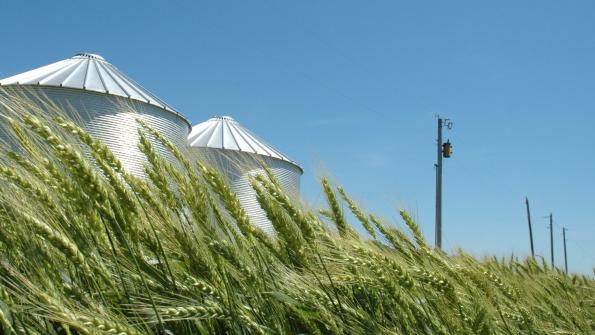November 29, 2016

Merchandising wheat may be profitable. A producer was talking about selling 2016 on-farm stored wheat — 62 lb. test weight, less than 0.5 percent dockage, zero percent foreign material (FM), and 14 percent-plus protein. He received a 10 cent premium.
Rather than pay a premium for relatively high test weight, low dockage, low FM, and other quality factors, the market applies a discount for wheat not meeting set standards. At times, the market may pay a premium for protein.
In early July, when the producer above received a 10 cent premium for 62 pound test weight and 14 percent protein wheat, the Kansas City (KC) market was paying about $1.12 basis the KC September contract (Milling and Baking News July 5, 2016) for 14 protein wheat. The KC basis for 11.2 percent protein (reported average protein for Oklahoma) was about 10 cents. This price implies that 14 percent protein wheat in KC was worth about $1.02 per bushel more than 11.2 percent protein wheat.
At this writing, the reported protein premium for 14 percent protein wheat is about $1.60 basis the KC December futures contract price. The premium for 11.2 percent protein is about 55 cents, which implies that 14 percent wheat is worth about $1.05 more than 11.2 percent protein wheat.
Note that the protein premium is reported as a basis, not a price. The market will set the local basis, based on the average quality of wheat in a given area.
DETERMINING PREMIUM
Unless the local elevator has a protein tester and segregates wheat by protein (there is a cost associated with this process), the elevator receives the average basis and thus does not pay a premium above the local basis for protein.
Another problem the local elevator has is that the marketing year protein premium may not be known until after the U.S. hard red winter wheat harvest is complete in September. In years of relatively high protein (2015), the basis between average protein and relatively high protein wheat may be small.
On August 28, 2015, the KC basis for 14 percent protein wheat was 67 cents, and 11 percent protein wheat was 55 cents.
To receive a premium, on-farm storage is required. On farm-storage construction and maintenance costs money — plus, the quality of wheat in storage must be maintained. Insects, heat, moisture, and other nuisances can play havoc with wheat quality.
As one producer said, “All I have to do is lose one bin of wheat and all my profit from storage is more than lost.”
STORED WHEAT
Producers must know what is in the bin, what the published discounts are, and have an idea of potential premiums. The KC protein premium may be obtained online through a computer search for “Milling and Baking News.” Under “DIGITAL EDITION,” click on the “Milling&Baking News” photo. Page over until a screen with tables appears. View the table “No. 1 hard winter.”
When putting wheat in on-farm storage, take a sample of every load and put it in a trash can. When the bin is full, take a composite sample out of the trash can and send it to an official inspection agency for grading and protein analysis. Send the grade report to flour mills, sub-terminal (large central receiving) elevators, river (port) elevators, and local elevators within shipping distance. Let them know when you plan to sell the wheat.
Merchandising wheat takes investment and effort. Time is required to learn how to merchandise wheat, develop a market, and build a reputation for delivering a high quality product. Some producers make it work.
About the Author(s)
You May Also Like






